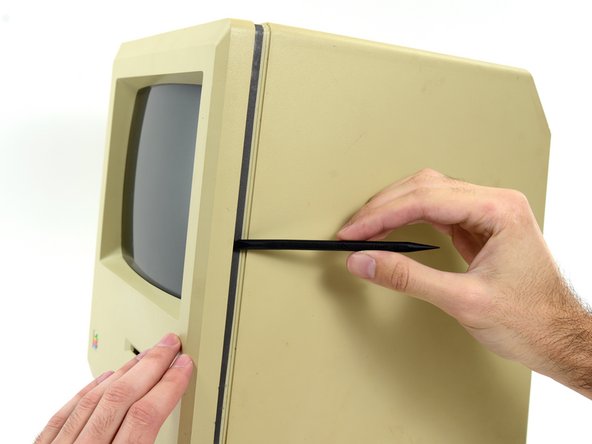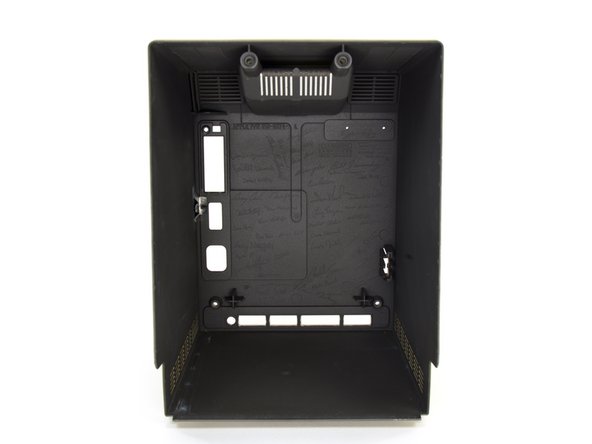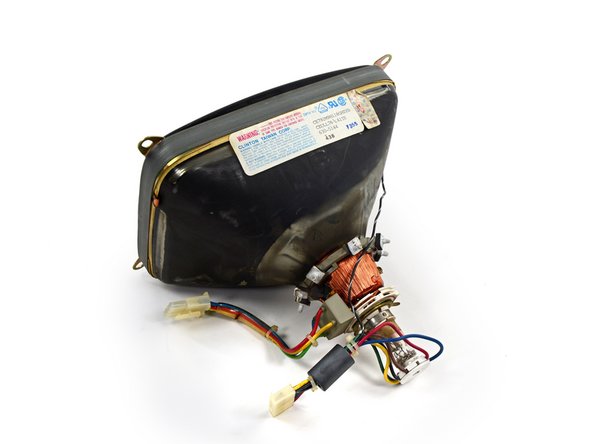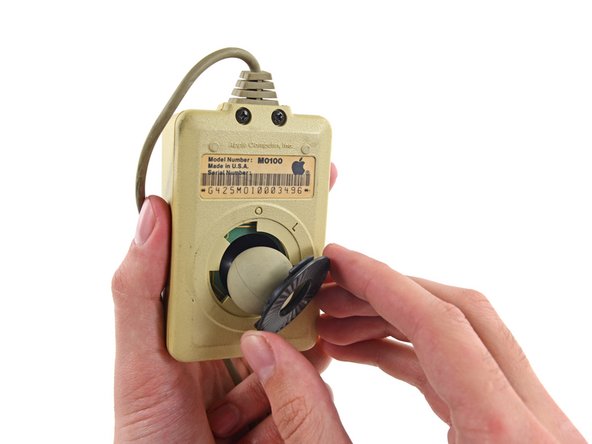Introduction
Join us as we live the time-traveler's dream—the deep, lucid, Orwellian vision of hope, fear, and nostalgia that is 1984. Just in time for its 30th anniversary, we laid hands on an '84 original: the Macintosh 128K. And, you guessed it—we're tearing it down like it's the Berlin Wall.
Today's blast from the past is brought to you with some awesome help from Cult of Mac and The Vintage Mac Museum. Cult of Mac will have us note that no vintage Macinti were harmed in the making of this guide. Our 128K had already passed beyond the veil before its noble sacrifice.
Fire up the flux capacitors and find our Facebook, track our timely Tweets, and get a dose of nostalgia from our filter-friendly Instagram.
Want some sweet Mac 128K wallpapers? Come get some!
What you need
Video Overview
-
-
The original Mac retailed for $2,495—that's $5,594.11 in today's dollars. So what did you get for all that coin?
-
8 MHz Motorola 68000 processor
-
128 KB DRAM
-
9" black-and-white CRT display running at 512 x 342 (72 dpi)
-
400 KB total storage via a single-sided 3.5-inch floppy disk drive
-
Single-button mouse and hefty keyboard
-
-
-
Before we crack open this time capsule (no, not these Time Capsules), let's take a moment to see just how far we've come in three decades.
-
As Apple works to popularize Thunderbolt, a 20 Gb/s IO interface, let's reflect back on the high-speed Serial port, sporting speeds measured in thousands of bps, rather than billions.
-
But hey, at least the AC plug is the same.
-
-
-
Thirty years of progress yields some impressive changes to input peripherals. Keyboards and mice are now wireless, thinner, and comprised mainly of sturdy, non-yellow metal.
-
And we now have arrow keys! In typical Apple fashion, they ditched the arrows on the original Mac to force people to use the mouse, a strange new accessory at the time.
-
Here's a side-by-side comparison of a single-button voice command peripheral and a magic-based, gesture-capable, wireless input device.
-
Okay, technically that boxy one is an Apple Mouse II, Model Number M0100. It utilizes a D-subminiature serial connector (DE-9 to be exact). The spacey egg is a Magic Mouse.
-
-
-
Now that's a model number: Macintosh Model M0001. (Apple built in just a teensy bit of headroom for future models.)
-
These early labels are sad tidings— even in Apple's younger, wilder days they didn't want people to service their own gadgets.
-
That FCC label means business: if you're going to tinker with your Mac, you run the risk of local radio interference. (We're guessing Pandora wasn't a viable alternative in 1984.)
-
-
-
It makes no difference to our Pro Tech Toolkit when this Mac was manufactured—it's packed with all the tools you need for the repairs of yesterday, today, and tomorrow.
-
Our flex extension takes on the deeply recessed T15 screws in the case.
-
True to form, Apple hid a screw; this time, it's under the clock battery door. No fuss for us, it's out and we're spudgering into history.
-
-
-
We deliver and open the vault; we're only slightly disappointed at the lack of a cool pneumatic sound effects.
-
The entire machine slides out of the back case, revealing the power supply, CRT display, 3.5-inch floppy drive, and hiding beneath it all, the logic board.
-
Molded into the inside rear plastic casing are
runes of technology pastthe autographs of Steven Jobs, Woz, Bill Atkinson, Andy Hertzfeld, Bruce Horn, Jef Raskin and the rest of the historic team.
-
-
-
-
Now that we're in authorized-service-personnel-only land, we found a few calibration potentiometers for fine-tuning the display.
-
All the lead (Pb) in the CRT glass is slightly more joke-worthy, but it's still not very funny.
-
Present, meet your past, face to face. And if you're both here in 30 years, maybe you'll meet the future.
-
-
-
Between the CRT and the capacitors, disconnecting this power supply sort of feels like disarming a bomb.
-
Apple did their best to keep average users out of the Macintosh, using Torx screws on the exterior. But once you're inside, it's a fun mix of screw types, including Phillips and flathead. Time to pull out our favorite roll of fixed-handle drivers, the Pro Tech Screwdriver Set.
-
-
-
To the tune of Mission Impossible, we quickly and safely remove the power supply. No electrocuted technical writers... today.
-
This 60-watt power supply is Apple Part number 630-0102.
-
Our comparison iMac features a 186 watt power supply, that fits onto a considerably smaller circuit board than the 128K's.
-
-
-
And the award for most noticeable technological advancement goes to: Mac displays. This enormous old CRT is a far cry from the graphics offered by today's ultra-thin Retina displays.
-
Bulky, heavy, and full of lead, these old-school electron guns in vacuum tubes and their deflection coils were all the rage in the '80s. Totally tubular!
-
-
-
Even 30 years ago, Apple had a thing for tidy packaging. With just a little coaxing, the logic board slides neatly out of its tray.
-
There's no active cooling on this daddy Mac. The Motorola 68000 has a little breathing room, but nothing more.
-
This processor, commonly called the 68k, is a surprisingly popular chip. Aside from the Macintosh, it can also be found in the Sega Genesis, Commodore Amiga, Atari ST, and even the TI-89 graphing calculator.
-
-
-
Notable ICs on the Mac 128K logic board:
-
Motorola MC68000G8 Microprocessor
-
Fairchild Semiconductor 74LS393 Video Counter
-
Micron 4264 64 kb RAM (64 kb x 16 chips = 1024 kb, or 128 KB)
-
Simtek C19728 and C19729 32 KB ROM (32 KB x 2 ICs = 64 KB)
-
Simtek 344-0041-A "Integrated Woz Machine" Disk Controller
-
Zilog Z8530PS Serial Communications Controller
-
-
-
What do we have here? A Sony…printing press? Planer? Turbo Encabulator?
-
We know you guessed right; it's a 3.5-inch floppy disk again leading the charge to new technology, leaving the old 5.25-inch drives in the past.
-
-
-
CLICK CLACK CLICKITY CLACKITY
-
Others say LISTEN TO MY LOUD KEYBOARD!
-
Regardless, the first person who guesses what we're typing in the video will win a prize: a handy pocket-sized battery removal tool.
-
-
-
Now for some mouse dissection! Don't worry—this will be much more humane than what went down in high school biology class.
-
We pop out the
eyeball with a quick twist. -
Opened up, we find plenty of plastic viscera, two quadrature encoders and a few resistors. Surprisingly, that's about all we find.
-
-
-
Macintosh 128K Repairability Score 7 out of 10 (10 is easiest to repair).
-
Once you’re inside, it’s simple and straightforward to replace any of the main components: floppy drive, power supply, logic board, or CRT display.
-
No adhesive anywhere.
-
User-replaceable clock battery.
-
Limited upgradability: The RAM is soldered to the logic board and can’t be replaced, and there’s no slot/port to add an internal drive. However, you can expand storage via an optional external floppy drive.
-
The case is fairly difficult to open, with deeply recessed screws and a tight panel fit.
-
There are some dangerous high voltages on both the power supply and the CRT that make repair potentially hazardous.
-
12 Comments
I can remember upgrading a Mac - kinda scary since new it cost me like $3,000! All went well and I did a couple of more for friends.
The Lisa was much easier to work with - the stuff just slide out like a tray. Had one that had been converted by Sun Computer in UT. I was the envy of all my friends with that machine - 'big' screen!
The RAM 'could' be replaced. I know, because I can remember upgrading my 128k machine to 512k on my kitchen table. I wouldn't recommend anyone try it because it's a lot of chips to unsolder.
http://tieudunghay.com/threads/xu-huong-...
a e s t h e t i c
Can iFixit do another Take-Apart that is a little newer?





































